Fertilize Indoor Plants: Leafy Greens & Herbs
How often should you feed your indoor plants? Do they even need fertilizer at all? Even the tiniest greens need a little extra nutrition now and then. Here are my best tips on how to fertilize indoor plants.
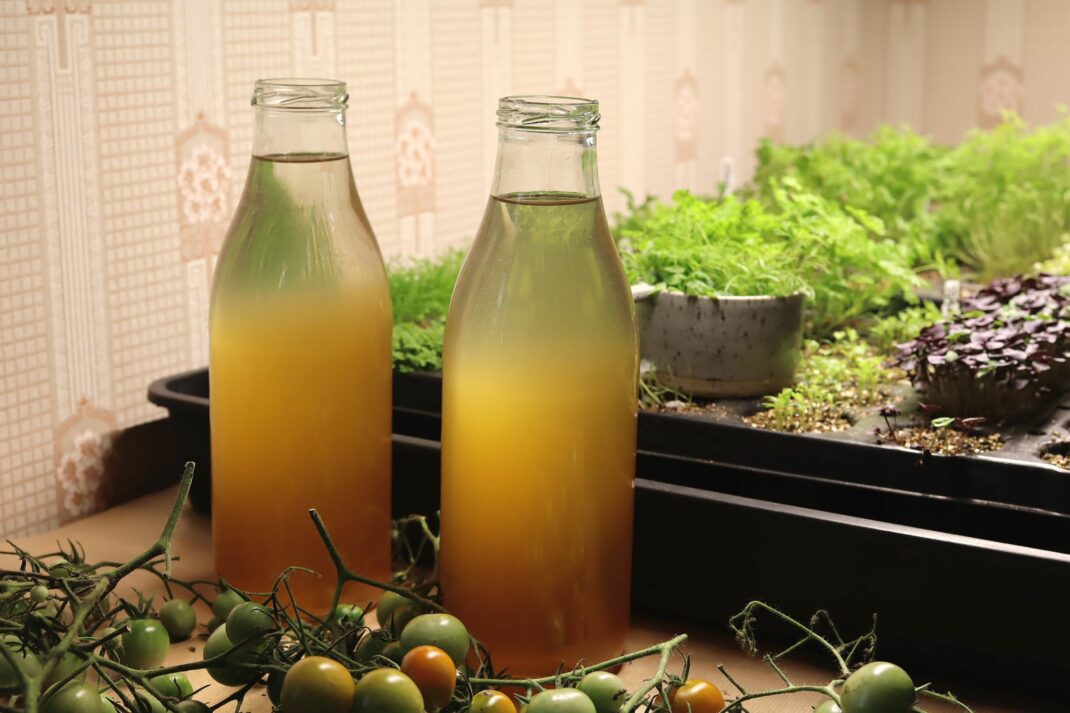
I fertilize indoor plants with well-diluted fertilizer.
When it’s getting colder outside, growing leafy greens and herbs indoors is such a good idea. A small growing station indoors can give you plenty to harvest for a long time. If you sow generously (for example, every four weeks throughout the fall), you’ll have loads of greens to enjoy in sandwiches, salads, and your everyday meals.
Right now, I have a lovely little herb garden growing under my grow lights. Three seed trays are filled with fragrant leaves and shoots that I harvest daily for my sandwiches. New sowings are already coming along, and I love watching the fresh growth as the chill settles in outside.
Read more: Zucchini patties with fresh herbs
When we grow indoors, it's really important to remember the fertilizer. You, my readers, have been asking me about this and I wanted to write something short about how to fertilize indoors to help you get started.
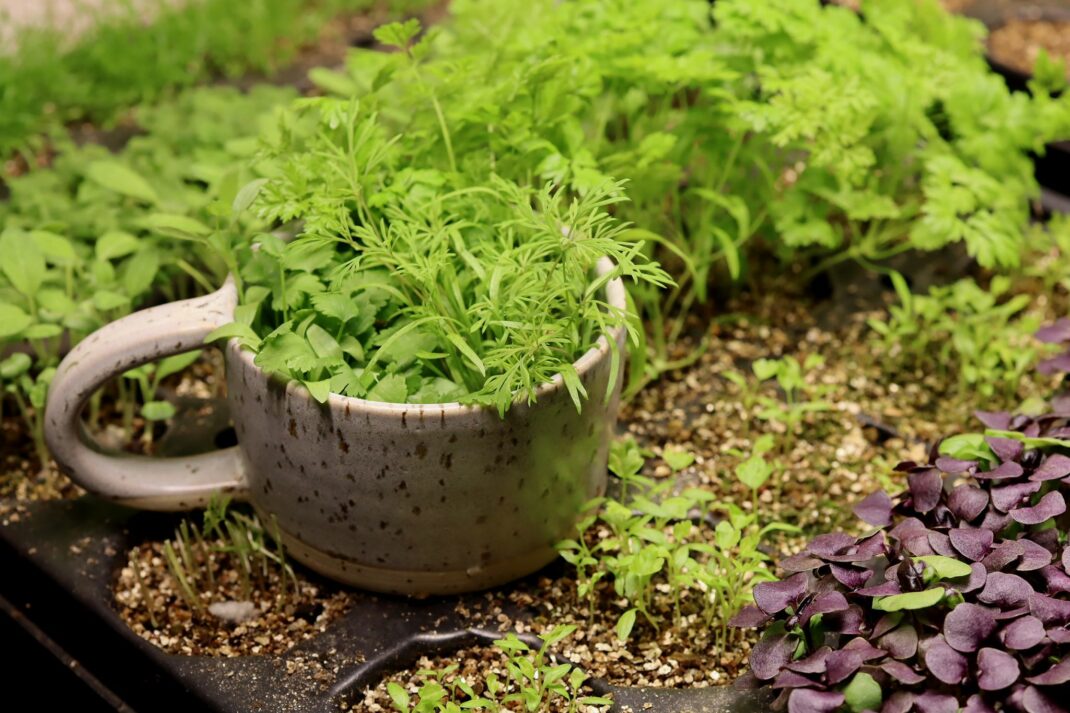
I often grow herbs indoors under a grow light. Here we see dill, coriander and chervil
Less soil — less nutrients
My herbs grow in plug trays with slightly larger cells — 35 per tray. Each plug is about two inches across at the top and narrower at the bottom. I sow several seeds in each plug so small or large clusters of plants fill the soil. The small plants mature quickly, and when the plugs are packed full, you get a surprisingly generous harvest from a small area.
But when many plants share a small amount of soil, nutrients disappear fast. Regular potting mix (used for sowing) contains enough nutrition for a few weeks, sometimes longer if the plants are small and not too demanding. But we need to keep an eye on our plants and look for signs that it’s time to start giving them fertilizers.
You’ll often see nutrient deficiency when the leaves start turning pale or yellow. Dill is a good indicator plant, it usually shows signs early.
So, pots and trays with less soil hold fewer nutrients (and less water) and need fertilizing sooner. Containers with more soil have a bigger nutrient reserve and don’t need feeding as often. Small plants need gentle, smaller doses and larger plants can handle more frequent fertilizing. This is a good rule of thumb when you want to fertilize indoor plants.
Read more: How to grow microgreens at home
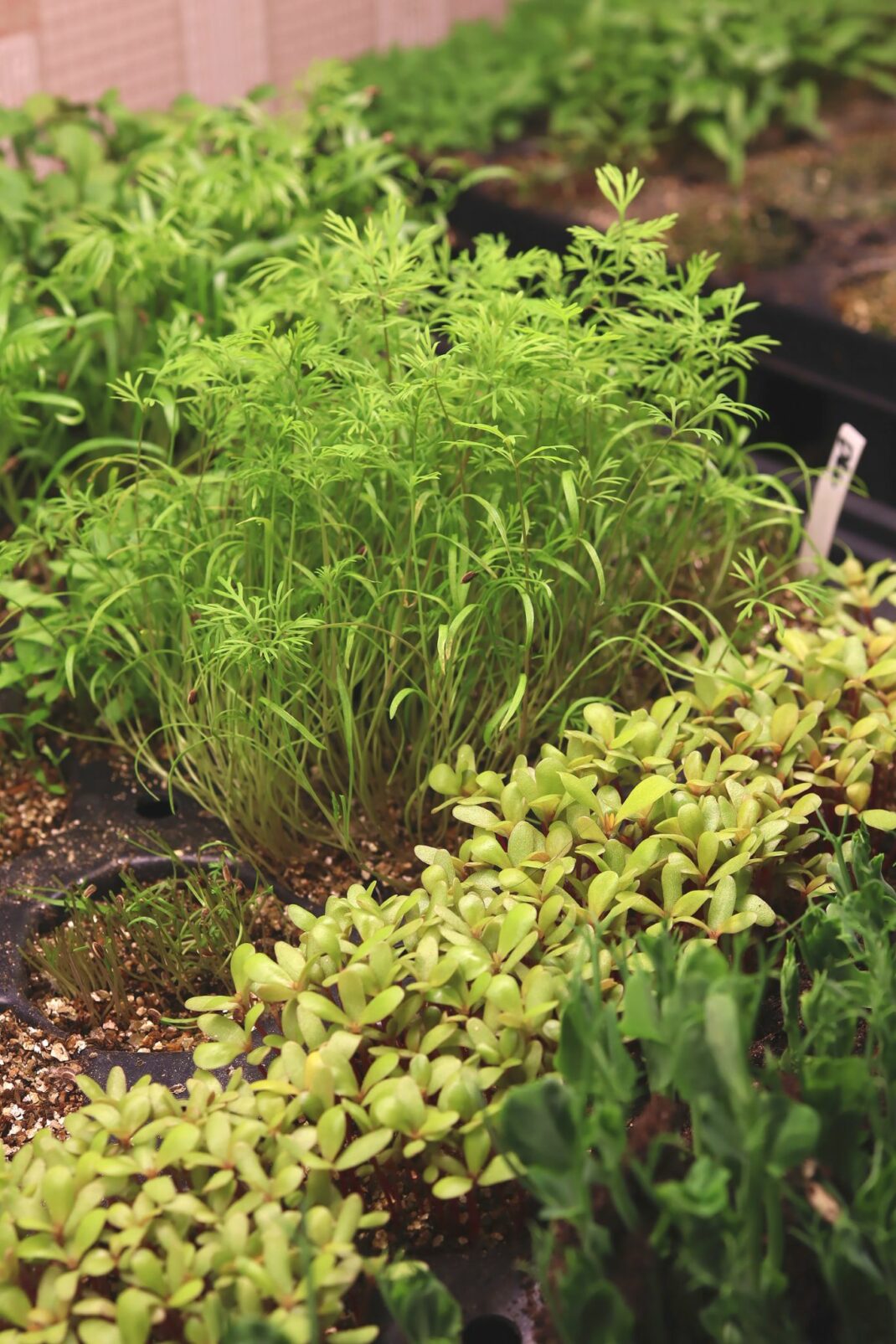
I harvest these little leaves so early that they almost look like shoots.
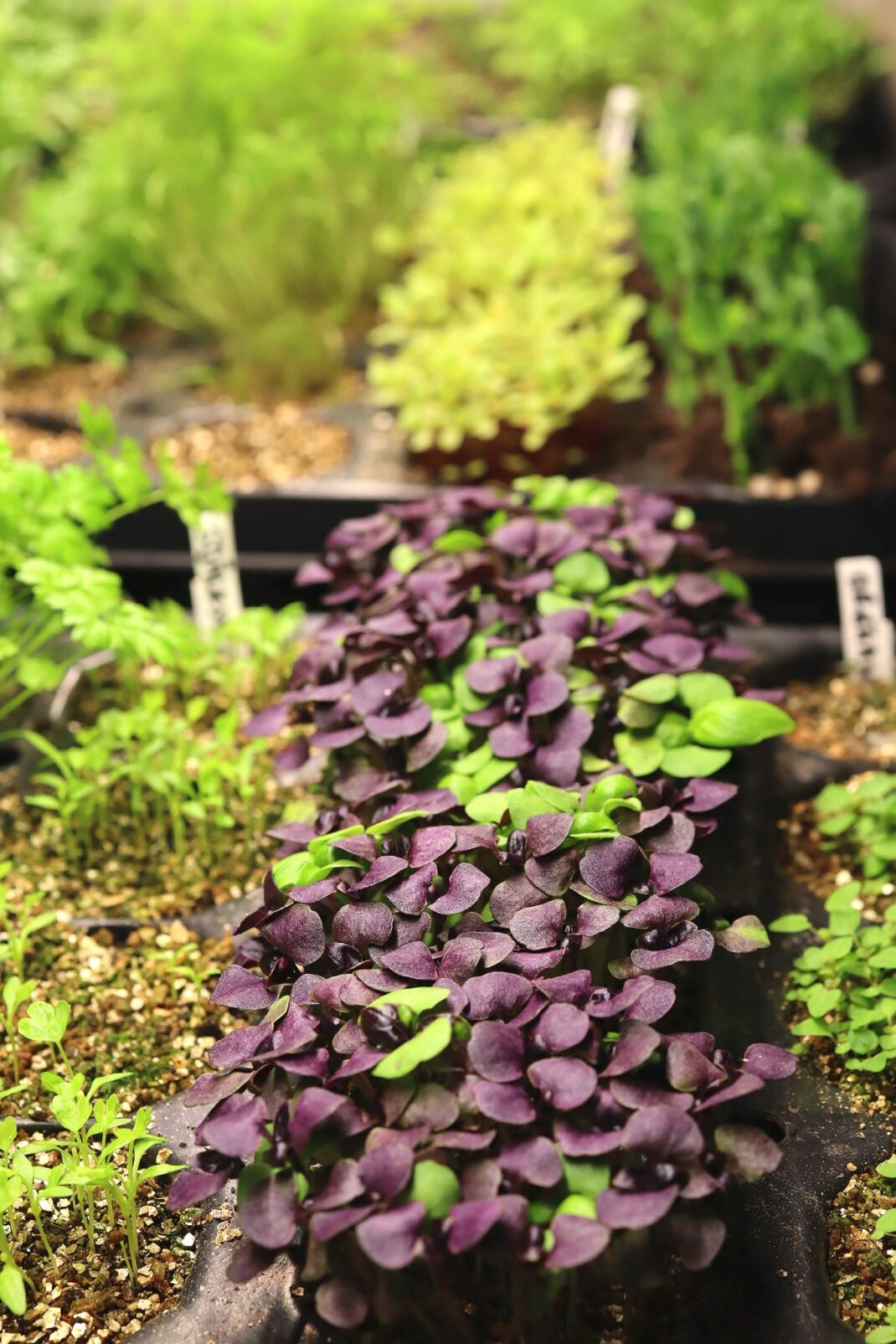
These purple leaves are actually basil! Lovely to grow as a microgreen.
Fertilize indoor plants
In my indoor setup, I fertilize one to two times a week with a liquid fertilizer that’s very mild. If you tend to forget when you last fertilized, you can use a very weak solution every time you water instead.
The type of fertilizer you use depends on what you have available. I use an organic plant-based fertilizer made from fermented plant materials. It’s store-bought, not homemade.
If you would like to make your own plant food instead, bokashi compost tea (the leachate) is one of the best options for this type of project. Just make sure to dilute it well! These small plants are sensitive and can easily die from a strong fertilizer mix.
Read more: 4 Organic fertilizers for your garden
Since I grow small greens that I eat fresh, I avoid fertilizers that don’t feel clean or appetizing to have on the leaves. I don’t use diluted urine fertilizer indoors because, no matter how careful you are, some of the liquid always lands on the plants when watering.
When I water with fertilizer, I gently lift the leaves and stems so the liquid lands mostly on the soil and not on the foliage. It’s hard to avoid completely — just do your best.
Things to avoid
Here are a few things to keep in mind when feeding your indoor garden:
- Avoid strong fertilizer solutions. Small plants can easily get shocked or die from big and sudden changes. Be gentle.
- Avoid watering the leaves. Whether with fertilizer or plain water, moisture on leaves under bright grow lights can cause burns. Try to avoid it.
- Don’t let fertilizer sit in trays. It can start to smell unpleasant, depending on what kind of fertilizer you use.
- Avoid long-distance fertilizers. Check where the product was made. Try to find a manufacturer that produces organic fertilizers close to where you are located, even if you order it online.
Finding the right amount of fertilizer takes a bit of trial and error. The key is balance — not too much, not too little.
Read more: Grow leafy greens in winter
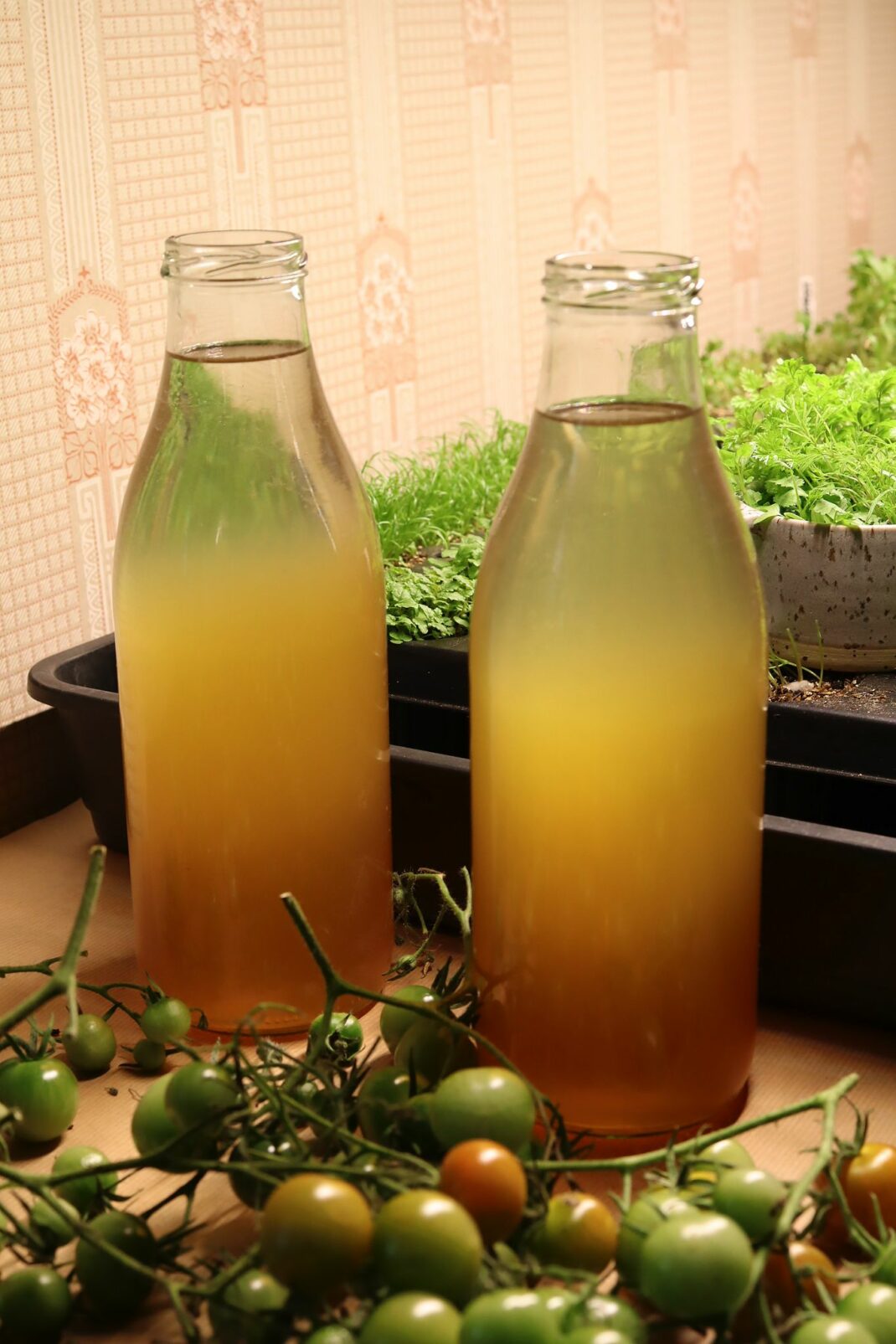
It takes some care to properly fertilize indoor plants. You don't want to do too much, or too little. Trial and error is the key!
More: Follow me on YouTube
Growing herbs and leafy greens indoors during fall and winter is rewarding, practical, and delicious. You’ll get more to harvest than you might expect, especially if you scale up your growing area just a bit. For me, having homegrown greens on my sandwiches all year round is a small luxury I don’t want to give up.
You’ll find plenty of indoor gardening tips here on the blog. Check back now and then for new posts, or use the search function to browse earlier ones.
/Sara Bäckmo
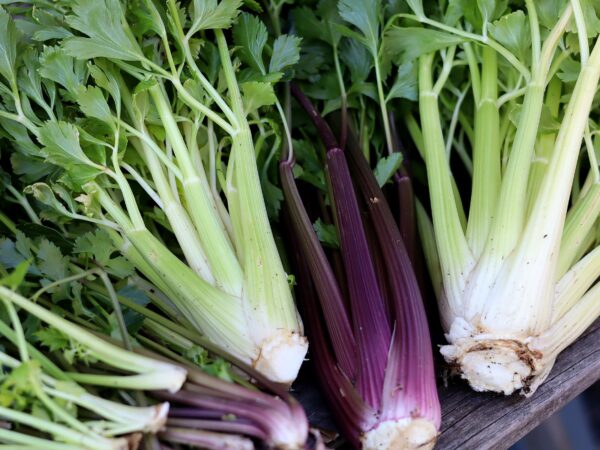
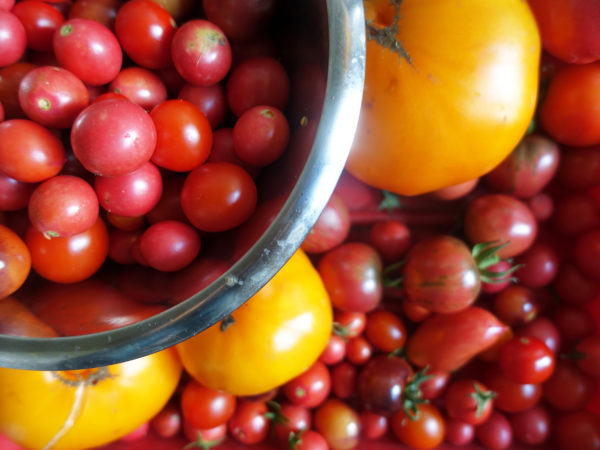

Leave a Reply
You must be logged in to post a comment.